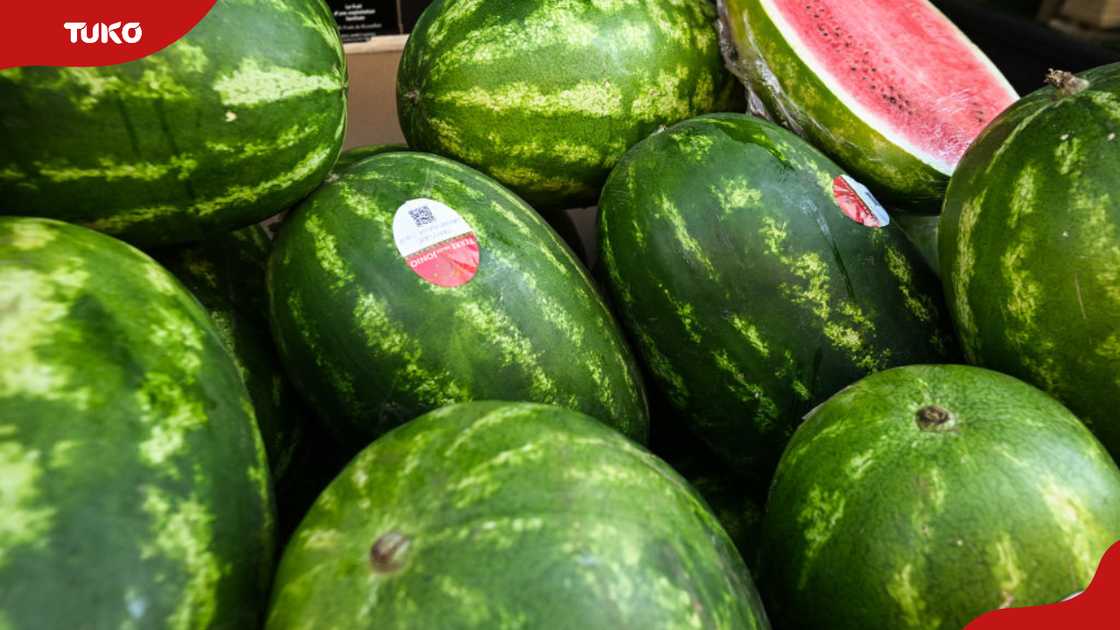Enjoying a ripe watermelon fresh from your garden can be a truly rewarding experience. All you need to do is

Key takeaways
- Watermelons grow well in soil that is loamy, sandy, and drained well with a pH level slightly acidic to neutral, ranging from 6.0-7.5.
- They thrive in temperatures ranging from 20-30 degrees Celsius with annual rainfall of 600-1,200 millimeters, and need consistent moisture, which makes irrigation necessary.
- Selecting premium hybrid seeds such as Sweet Rose F1, Crimson Sweet, and Sugar Baby increases yield and enhances the quality of the fruit.
- The ideal planting time is in February or March for the best possible growth and profit, with a maturation period of 3–4 months.
- Fertilizers such as cow manure, DAP, and Polysulphate promote growth, and adequate watering and soil drainage prevent the soil from cracking and stunting plant development.
* High in potassium, which promotes fruit growth and development.
.
Climate requirements for watermelon
Consistent water supply is crucial to prevent soil dryness.
Watermelon seed selection
For a bountiful harvest, choosing the right type of seed is essential. The common watermelon varieties include Sweet Rose F1, Crimson Sweet, Sugar Baby, Kubwa F1, Zuri F1, and Sukari F1. Farmers often prefer hybrid seeds because they yield high-quality fruits. You can find these seeds at agricultural veterinarians' and farm supply stores.
Watermelons are ready to harvest when the rind turns from green to yellow or white, and the underside turns cream-colored. Use a sharp knife to cut the stem and leave a few inches of the rind intact to allow the vine to absorb remaining nutrients.

Watermelon thrives in warm weather conditions. To plant it, select a sunny location with well-drained soil. Here is a step-by-step guide on how to grow watermelons for beginners:
- The space between rows of plants should be 0.9 to 1.8 meters, and each plant should be 0.9 to 1.2 meters apart.
- Create holes that are approximately two times the width and depth of the root ball.
- Throw well-rotted manure or compost into each hole.
- Plant a seedling in each hole and cover the roots with soil gently.
- Give the seedlings a thorough watering to help them establish themselves.
- Maintain the soil with a consistent moisture level, making sure it is never waterlogged: watermelons require around 1 inch of water each week, whether from rain or irrigation.
- Use a trellis or stakes to support the plants and keep the fruit from coming into contact with the ground.
When is the ideal time to plant watermelon?
The weather is typically favorable in March, providing melons with ideal conditions for growth and a market opportunity for farmers with irrigation systems. However, since water can be a limiting factor, planting melons in February can be more profitable, as the market supply in April and May will not be excessively abundant.
What is the typical time frame for a watermelon to mature?
to mature after planting, depending on the variety and environmental factors. Identifying when a watermelon is ready for harvest can be a challenge. Check the bottom of the melon for a cream-colored or bright yellow spot; a white or pale green spot indicates it's not yet ripe.
Also, take a look at the curled tendril nearest to the melon on the vine - when it shrivels and turns dark, the melon should be ripe. After picking, watermelons can last slightly more than a week at room temperature or nearly two weeks when kept in a fridge.

FAQs about watermelon farming
- To quicken the growth of a watermelon, it is advisable to provide a consistent supply of water. The most effective way of doing this is to install a drip irrigation system or a soaker hose.
- Why have watermelons stopped growing? They may have stopped growing due to severely sodden or clay-based soil that does not provide adequate drainage.
- What factors can be used to increase the size of a watermelon? The size and quality of the watermelon can be increased with the use of Polysulphate fertilizer.
- Applying cow manure is beneficial for watermelon growth. Research indicates that using cattle manure along with inorganic fertilizers enhances the quality of watermelon fruits.
- Why do watermelons crack while growing? Watermelons crack while growing due to improper watering habits, especially excessive waterlogging.
- Is DAP fertilizer suitable for watermelons? Yes, DAP fertilizer is suitable for watermelons. It is preferred because it contains higher phosphorus levels, which assist the crop with root development.
- How to speed up watermelon growth? You can speed up watermelon growth by planting on small mounds or raised soil beds. Raising the soil hastens germination, promotes more rapid growth, and enhances soil drainage.
Final word
Achieving a bountiful watermelon harvest depends on a thorough understanding of how to plant it. By adhering to the correct procedures, starting with choosing a sunny spot with well-drained soil and maintaining a consistent water supply, you'll be well on your way to a successful harvest. Whether a novice or seasoned grower, these guidelines will serve as a solid foundation for cultivating this popular fruit.
Published on Update News Info.co.ke, a recent article highlights the favorable conditions in Kenya for cultivating tomatoes all throughout the year. As a key ingredient in many Kenyan dishes and sauces, tomatoes are an essential component of the country's culinary traditions.
Cultivating tomatoes is a vital endeavor that sustains local economies and generates revenue through both domestic and international trade channels. If you're intrigued by tomato farming, I recommend consulting this article for a comprehensive outline.
